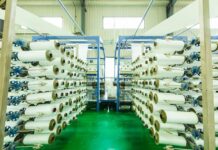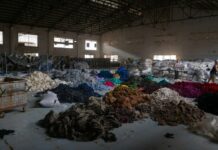On April 10th, the United States announced it would suspend reciprocal tariffs for over 75 trading partners, including Vietnam, for a period of 90 days, reducing them to 10 percent. Nevertheless, this tariff strategy serves as a cautionary note for the textile and apparel industry to consider diversifying their sources of raw materials.
The Vietnam Textile and Apparel Association (VITAS) indicates that there are approximately 3,800 textile companies operating in the country. Of these, around 70 percent are engaged in producing finished garments, while only 6 percent focus on yarn production, 17 percent on fabric manufacturing, and 4 percent on dyeing operations.
Vietnam consumes about 400,000 tonnes of cotton annually; however, merely 3,000 tonnes—less than 1 percent of local demand—are sourced from domestic supply chains. In addition, local fabric production is limited, fulfilling only 25–30 percent of market requirements.
According to Truong Van Cam, vice chairman and general secretary of VITAS, the industry has long had aspirations to establish specialized material supply centers.
Affordable raw materials from China, South Korea, and several ASEAN countries remain vital to Vietnam’s textile sector. Most yarn is imported from China, India, and the U.S., as the country lacks significant capacity for cotton cultivation.
Vietnam’s ability to bolster domestic consumption amid a challenging global landscape is hampered by the absence of specific regulations to promote material production and the fact that it has not yet transitioned its textile sector into a fully operational fashion industry.
Pham Van Viet, vice chairman of the Ho Chi Minh City Association of Garment Textile Embroidery and Knitting, observed that Vietnam does not have a well-structured market for trading textile and footwear materials. He highlighted that current supplies are primarily limited to small household markets for local retail and a few manufacturers who only produce for internal factory use.



































